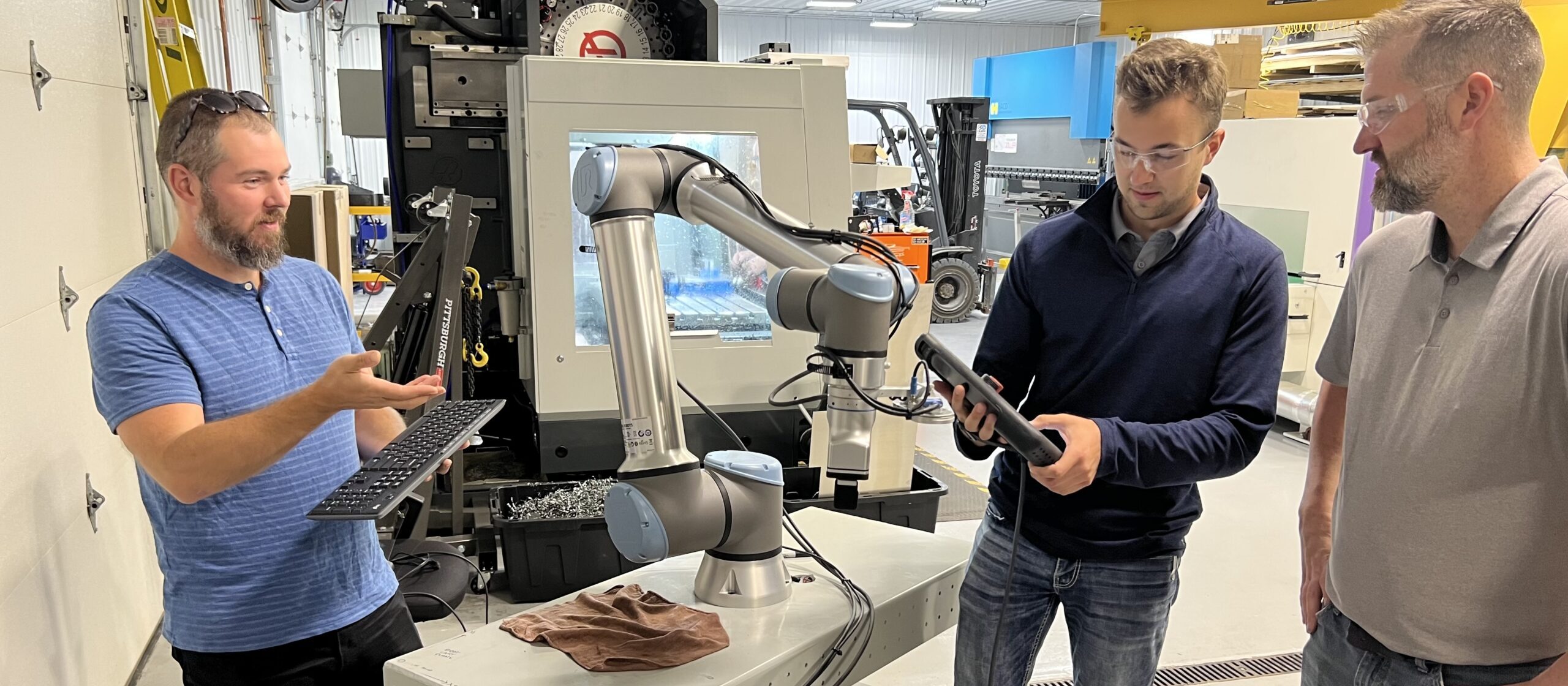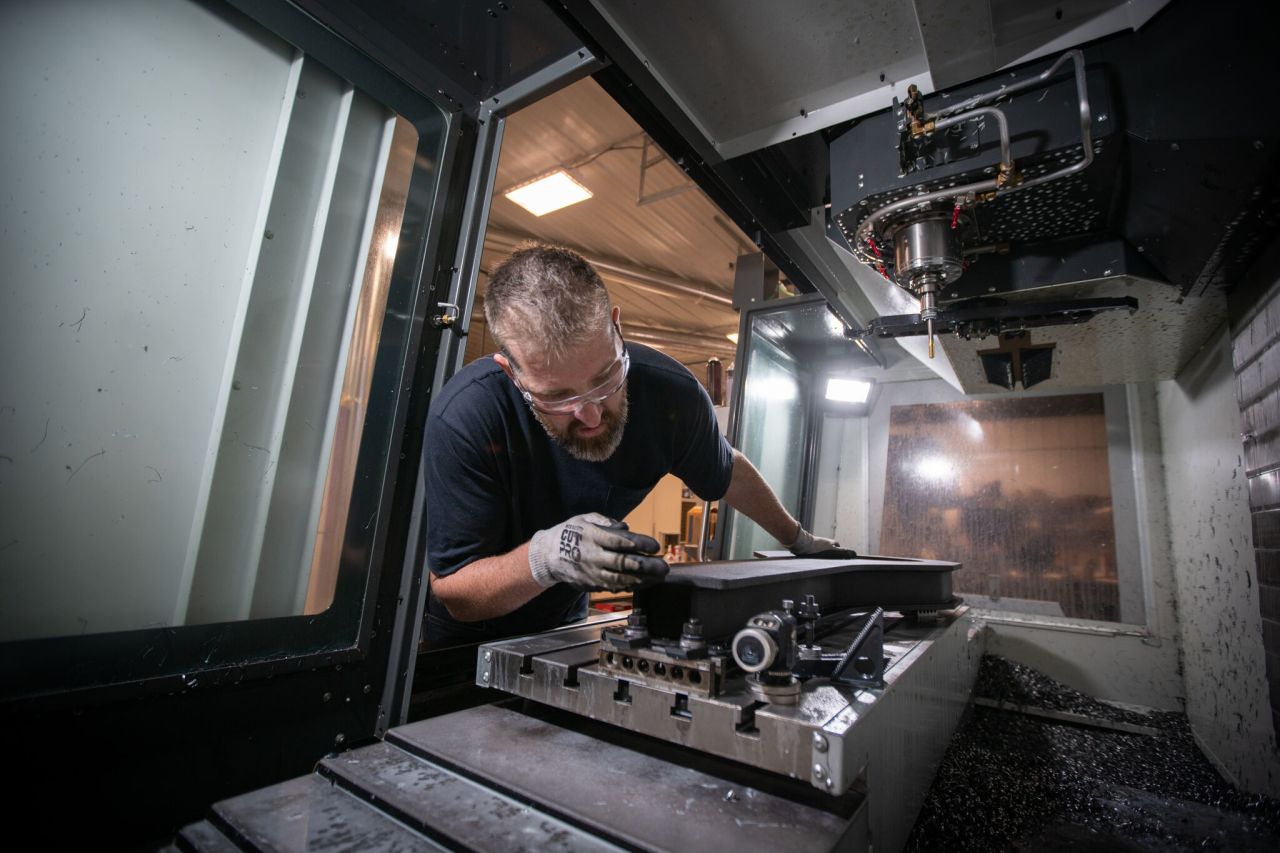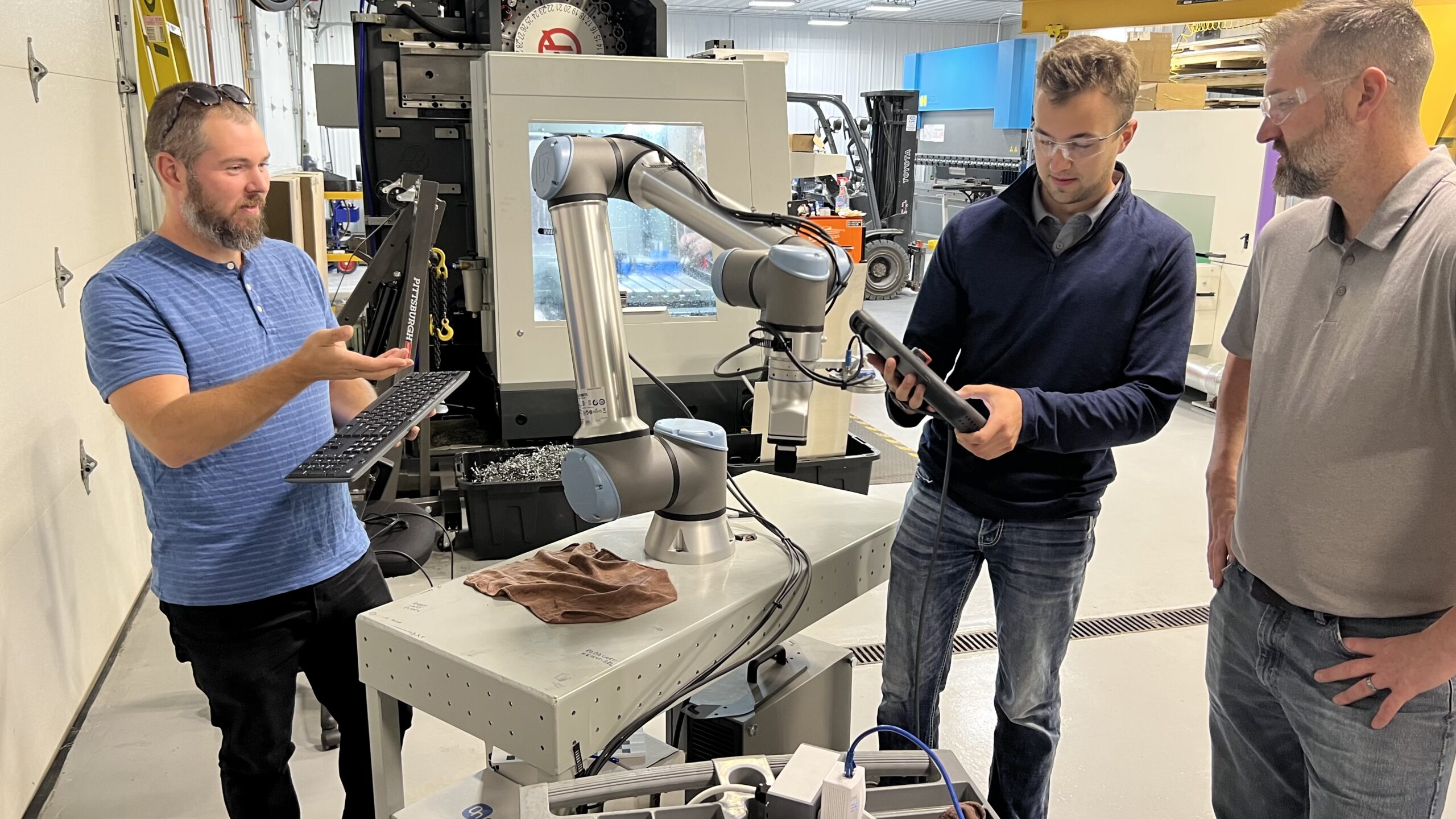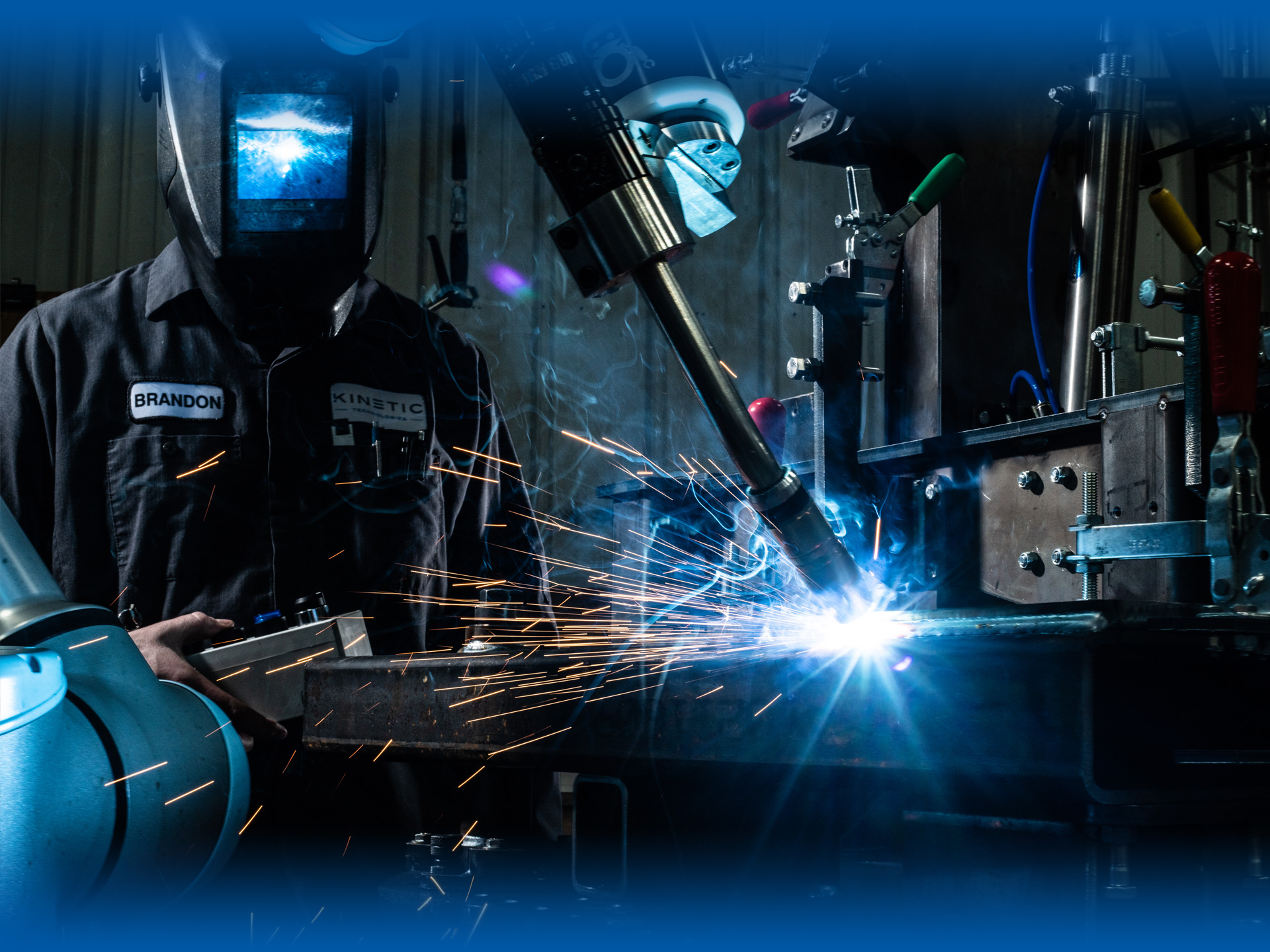
Robotic Automation Myths: Debunked
Using robots in manufacturing can help you outperform competitors and get more work done. However, many shops think it’s hard and costs too much money, takes too long to make it worth the investment, and takes jobs away from real people. But as someone who’s built a career around product development and robotic auotmation, I’m here to tell you that’s not true.
Robotic automation has come a long way—the innovation I’ve seen in the past few years alone, since I co-founded an AI-powered driverless tractor company called Smart Ag in 2017, has been remarkable. After being introduced to the world of automation and the high tech robotics industry via Smart Ag, I started Kinetic Technologies LLC. At Kinetic, we focus on solving the unique challenges associated with rapid manufacturing. We integrate cobots and build systems that make welding, machine tending, and other tasks more affordable and accessible for small and medium-sized job shops.
I’ve seen first-hand the impact that robots and automation can have on businesses of all shapes and sizes, particularly small-mid sized manufacturing shops. But because small business owners often assume that robotic automation is too expensive or complicated for their needs, many miss out on the benefits.

Common Assumptions Around Robotic Automation
“It’s complicated and will take too long for our team to get up and running at our shop.”
When people envision setting up robotic automation at their shop, they often picture a highly complicated process. They assume they’ll need to bring an engineer onto their staff to get things up and running. They see themselves being up at 2:00 AM working to mirror their shop’s processes on a laptop.
But it doesn’t have to be that way; robotic technology has come a long way and is more intuitive than ever. Plus, companies like Kinetic exist to provide turnkey solutions to get a robotic cell in place and productive in your shop within 90 days.
“It’s going to take us years to pay off that robot.”
After a successful robotic integration, businesses tend to see ROI within 6-12 months. Initially, that’s from the increased productivity and work quality they see, and after a year or so, they’ll also be able to calculate the cost savings on things like accidents in the workplace, avoidable errors, and duplicative work.
“Robots are coming for my job.”
Currently, there are simply not enough people available for hire in the manufacturing industry. What if you could free up the time of a highly skilled team member so they could stop spending their time doing so much manual, repetitive labor? They could spend more time doing work that adds more value to your shop and that they find more fulfilling. Robotic automation doesn’t eliminate positions; it makes staffing easier.

How Robots Are Empowering U.S. Manufacturers
Robotic automation can boost productivity, yes. But on a larger scale, here are just a few ways it empowers American manufacturers:
It improves workplace safety.
While American job shops are far cleaner and safer than the dark and dangerous stereotype they’re often painted as, working in any type of facility can be physically demanding or unsafe at times. Tasks that could potentially be dangerous or just ergonomically uncomfortable are ones you can often delegate to robots (a robot doesn’t care if it hasn’t sat down all day). We’ve had a very large awakening with the Great Resignation: your people are exceptionally valuable, so you have to create an environment your people will feel safe and comfortable in.
It frees up the schedules for your most skilled team members.
Many argue that the labor shortage is actually a skills gap. Having skilled workers on staff—and having enough of them—is something companies across the U.S. are struggling with. Free up your skilled employees’ time by adding robots to your floor that can do things like load and unload machines, and your human employees can spend more of their valuable time solving problems no one else can and driving revenue for the business.
It helps fuel American manufacturing.
I have amazing welders that have 20 years of experience. They’re AWS certified. They’re good people who I want on my team. I may be able to take what’s in their head and apply it to a robot to 10x their productivity, but I can’t find 9 more welders like them. I can stretch their capability, reduce the part costs and labor burden, and still keep those good people around.

Offshoring happened in the last 20-30 years because American workers are more expensive than those in China, India, or other places that devalue their labor costs. But when you buy from an American manufacturer, you have a product that’s made with American quality. You avoid the risk that your parts get stuck on a ship. If the supplier is local, you can meet with them in person. Not to mention the positive economic impact we see when our industry is thriving. So how do we reduce labor costs without devaluing our human resources?
If we want to bring more manufacturing work to the United States, we must be able to compete with offshore factories. It starts by embracing innovation.
A Turning Point in History
We’re standing on the edge of what was before and what’s going to be in the future. To put it into perspective, look back at how shops were run 20 years ago, when people were on the fence about buying a CNC machine. If you’ve got a successful job shop right now, you’re probably not pulling out the old Bridgeport.
Many fear that robots will disrupt “the way things have always been done.” But disruption is how we grow as an industry and society.
Find out how today’s modern manufacturing leaders are creatively combatting the labor shortage.
___
Mark Barglof is the owner of Kinetic Technologies LLC based in Algona, IA. In addition to robotic automation, Kinetic Technologies is a design and fabrication business that focuses on early stage product development, prototyping and low-volume highly-engineered part production. Mark has over 15 years of product development expertise in the aerospace (Rockwell Collins) and agricultural industries (John Deere, Ag Leader, Smart Ag, Raven Industries) and farms north of Algona, IA. In addition to his extensive background in small, medium and large companies, Mark is a serial entrepreneur. Prior to owning Kinetic Technologies, he co-founded Smart Ag which created the first commercially available aftermarket kit to turn a tractor into a fully autonomous vehicle. Mark served as the General Manager and Chief Technology Officer for Smart Ag and led the product development and eventually the M&A efforts. Smart Ag was purchased by Raven Industries in Sioux Falls, SD in 2019.
